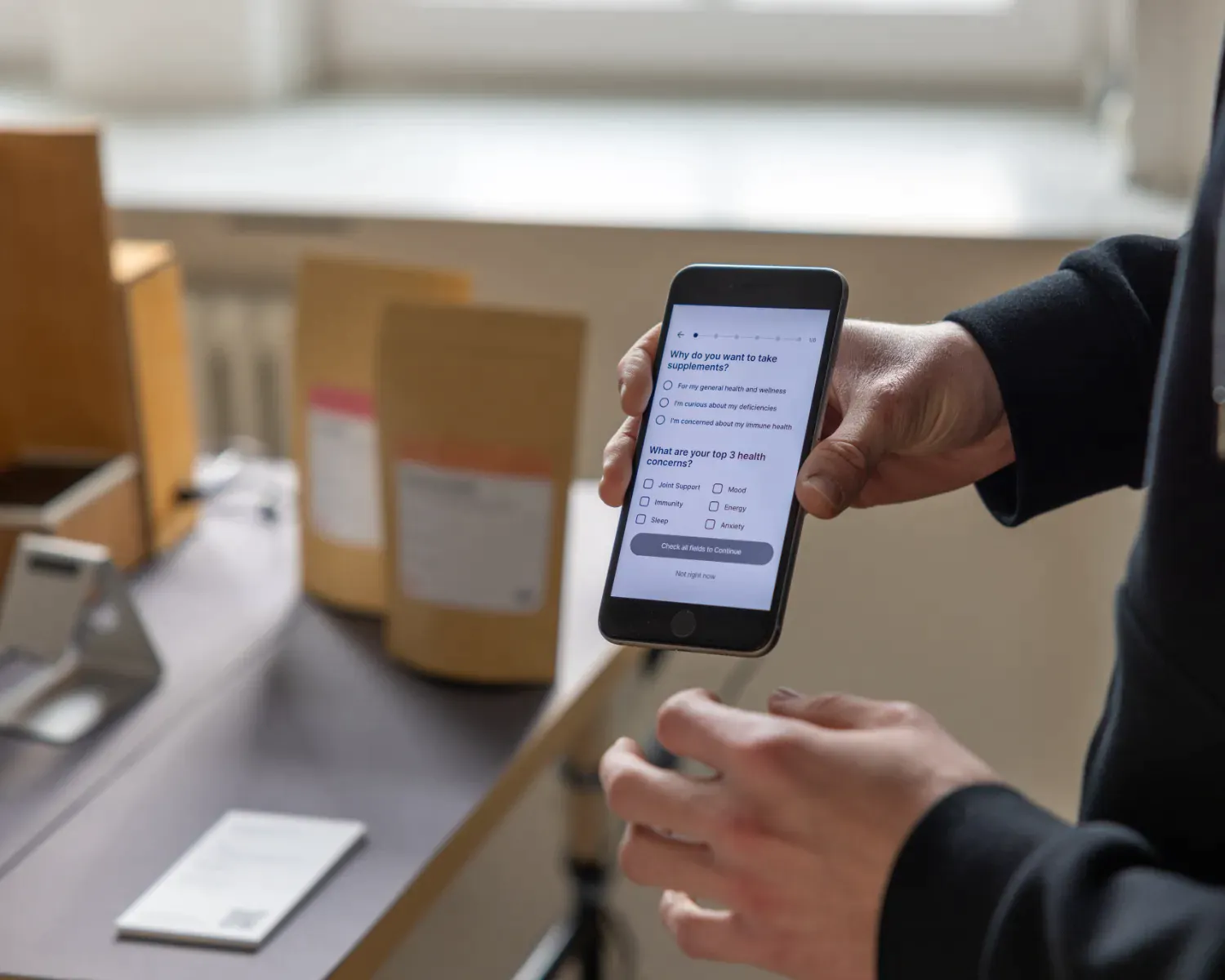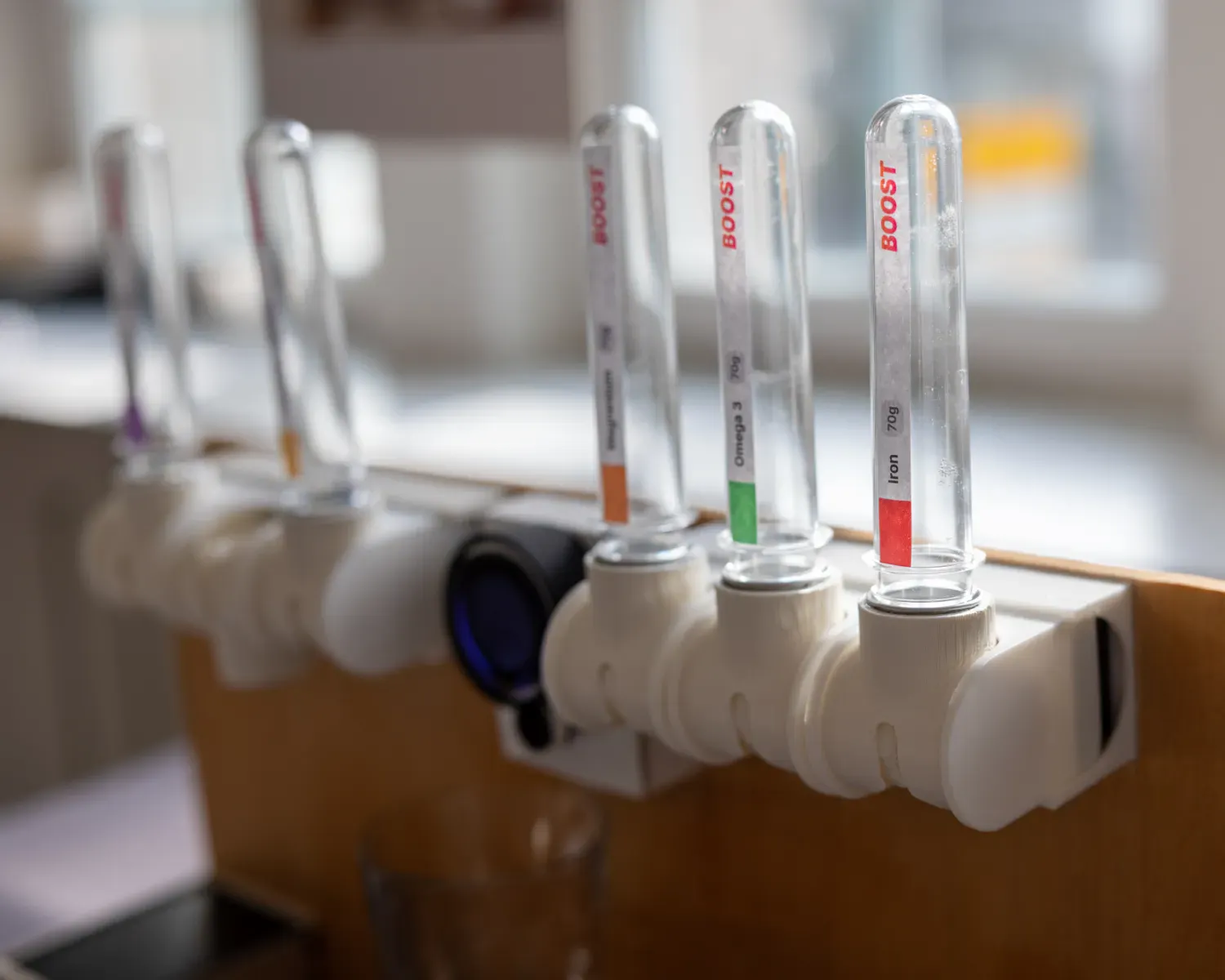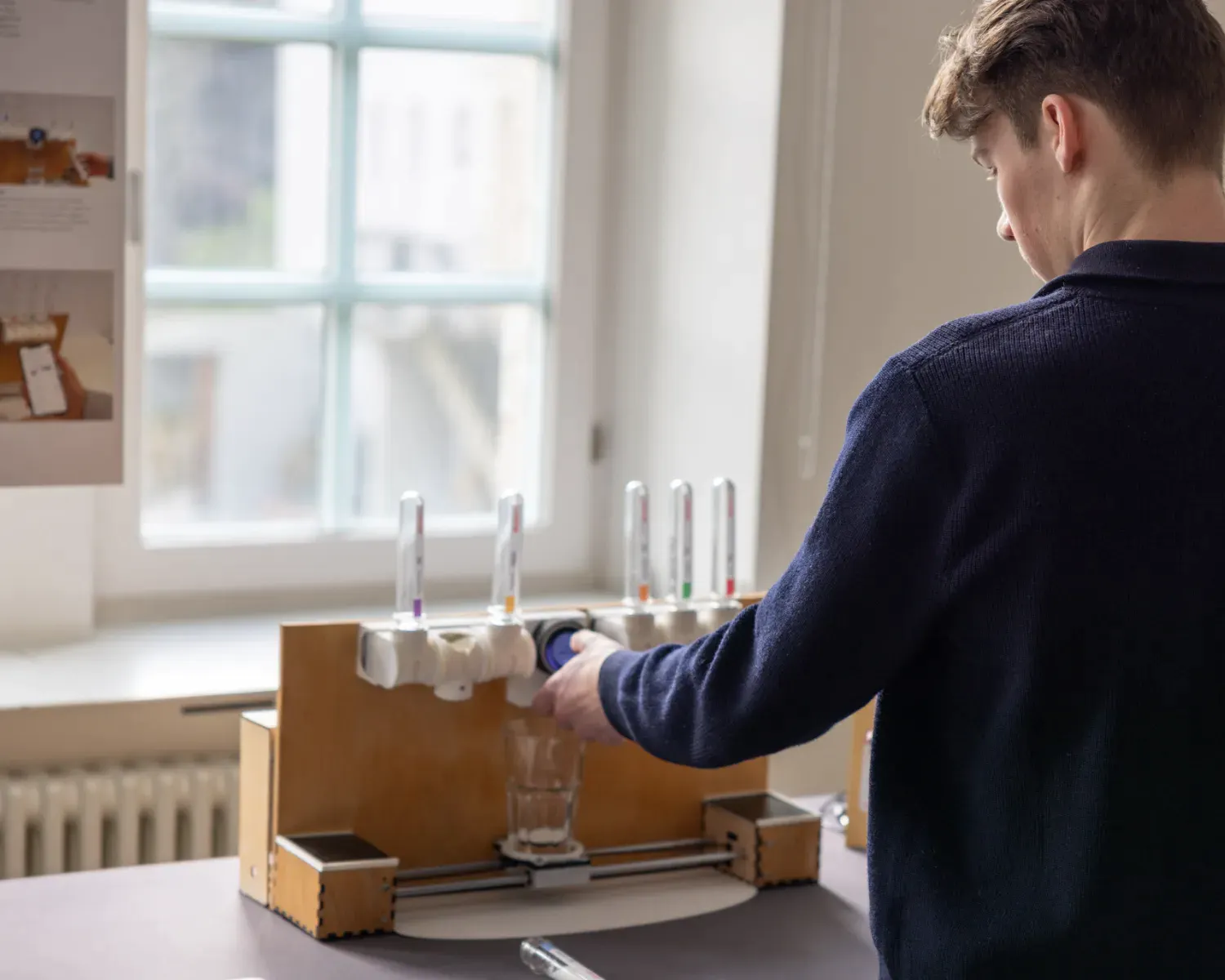Work
Boost
Nutrition application & hardware device developed in 2022 - 2023 for an university project at HfG Schwäbisch Gmünd.
| Year | 2022 - 2023 |
| Collaborator | Anton Stallbörger |
| Website | Landingpage |

Boost is a prototype of an innovative digital product and app designed and developed with Ionic React, NodeJS Express, and Prisma. The product seamlessly integrates with the app, allowing users to track their daily nutrient intake and receive personalized recommendations based on factors such as weather and step count. As a digital product designer, I had the opportunity to work on Boost's prototype and develop its design, ensuring a seamless user experience.



Challenge
The challenge was, that altough most people are taking supplements, they often don't know how much they should take. Additionally, shelfs are full of different supplements and people often don't know which one is the best for them.
Action
Research
First of all, we had to make a survey to find out what people thought about the current state of the nutrition industry. We also had the intention of finding out what people are taking as supplements and in what form. Our survey was made with the help of Airtable so we could easily analyze the data afterwards. In our research we found out that people are taking supplements in the form of pills, powders, and liquids, but when they could choose, they would prefer to take them in the form of a drink or powder because it is more convenient.
Vertical Prototyping
In the vertical prototyping phase, we had to create a hardware prototype that is close to the final prototype. The goal was to test the hardware and see if it works as intended. We started by testing different motors and found out that the Nema 17 stepper motor was the best option for our prototype. We also had to send and receive data from a quickly made Frontend to the Backend. We used the Arduino IDE to program an ESP32 and used a NodeJS Express server to receive the data. We also made a quick Frontend to send the data to the Backend. Our tech stack for the project was made clear, we were going to use Ionic React for the Frontend, NodeJS Express for the Backend, and Prisma for the database.
Frontend
When researching and discussing our Frontend, we came to the conclusion that it would be best, if we develope a application that is completely usable without having to connect to a device. This way, we could test the application without having to make a hardware prototype first. We started by building the whole application in Figma as a fully functional prototype. We then started building the application in Ionic React from scratch. At this time, we also already set up the Backend and the database. We used Prisma to generate the database models and used Planetscale for its hosting. We used Render.com to host the Backend. We have connected the application with Apple HealthKit and OpenWeather API to get the user's location and weather data for calculating the user's daily vitamin intake.
Hardware Device
In our hardware, we incorporate a total of seven stepper motors, along with a selection of sensors, a circular display, and two ESP32 controllers. Our system is designed to efficiently transmit and receive data via HTTP requests, utilizing a range of libraries to ensure seamless control of all components. By opting for HTTP requests, we prioritize reliability in our product design and aim to offer a highly realistic user experience.
Result
Our prototype was shown on the University Exhibition and received a lot of positive feedback. People told us they would use the app and device if it was available. We also were invited to present our project at a Startup Accelerator.
